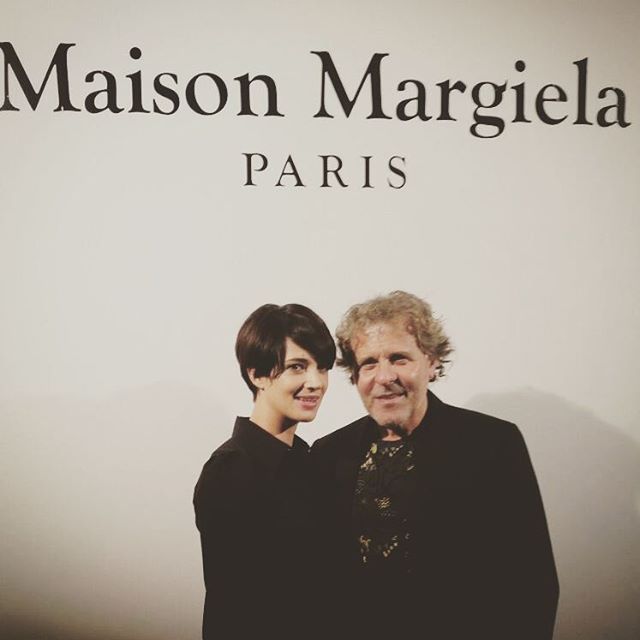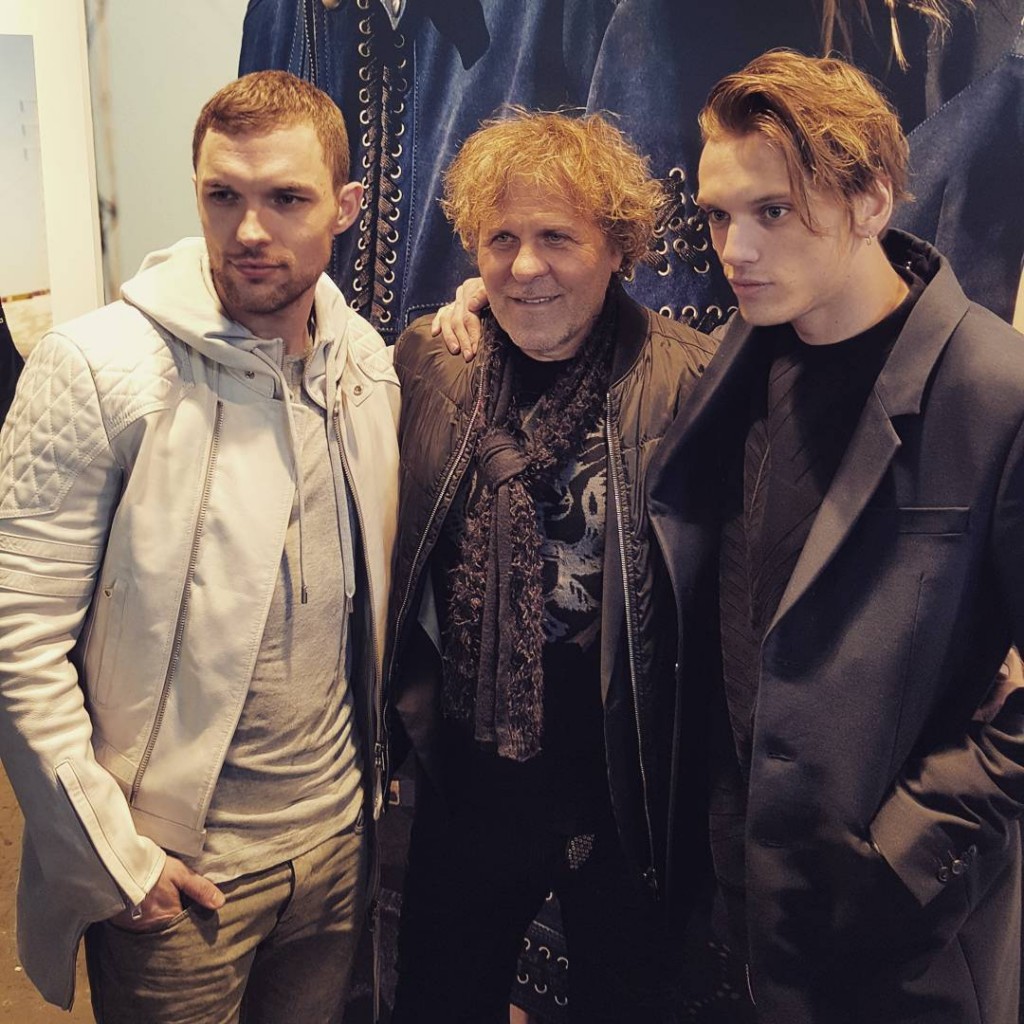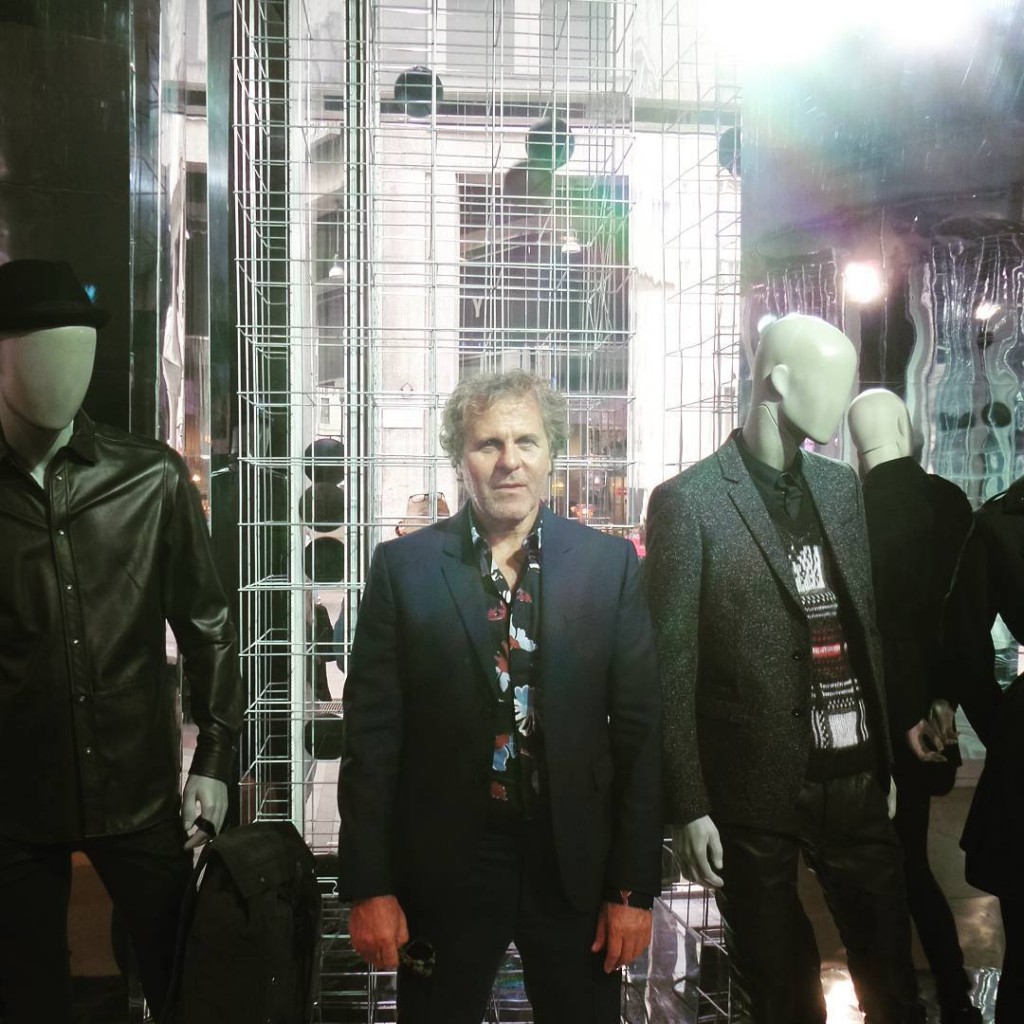
This is a response to the article ‘Renzo Rosso: ‘Galliano, Elbaz and Me’’ by Colin McDowall, published in Colin’s Column for The Business of Fashion, January 21, 2016.
COLIN MCDOWELL’S GUSHING RECENT profile on Renzo Rosso, president of the fashion conglomerate, Only The Brave (OTB), for The Business of Fashion presents Rosso as a passionate, but ultimately down-to-earth family man-cum-businessman. Filled with mentions of Rosso’s personal relationships with political and religious figures (the Dalai Lama and Shimon Peres, for instance, are both ‘proud to call Renzo as a friend’), sartorial anecdotes (Rosso’s home-made pair of bell-bottom jeans) and charity philanthropy (‘He helps people help themselves.’) that supposedly serve as evidence to this, instead leave the probing reader with the distinct feeling of the ensuing text having a hidden agenda.
Rosso has been portrayed as a boisterous, unpretentious and at times provocative figure before,1 a one-sided persona meant to evoke a contrast with his French counterparts, and McDowell appears content to build on this stereotype. However, the fawning over Rosso blindsides the broader financial context of his company, and his powerful role within the fashion industry.

The personal affection we’re encouraged to have towards Rosso diverts our attention from his financial dealings as CEO of the OTB Group, the fashion conglomerate Rosso founded in 2000 which now overarches Diesel, DSquared2, Maison Margiela, Viktor & Rolf and recently Marni in its portfolio alongside the manufacturing and distribution company, Staff International. The OTB group’s total earnings exceeds €1.5 billion ($US1.6 billion) and, according to WWD, at the end of 2014 the group reported net profits of €5.5 million, ($US7.3 million), nearly four times the previous year,2 pitching him in the arena of the major players in terms of fashion conglomerates.
An earlier, and much more candid article on The Business of Fashion went deeper with Rosso,3 with the platform’s Editor-in-Chief Imran Amed observing, ‘Let’s talk about Viktor & Rolf. If I’m honest, I find this brand a little bit confusing.’ Amed goes on to point out that, ‘[…] there are many other Italian brands that are now for sale. In a way, the difficult economic situation has been advantageous to you because it’s given you opportunities to seize…’ Both his comments raise pressing issues facing the industry, and the willingness of The Business of Fashion to ask them elsewhere on their site makes this toadying text all the more confounding.
McDowell goes to every effort to highlight Rosso’s benevolence and charity work with descriptions of his cultural and political clout (‘He is of a status that ensures when he calls, the call is taken — or returned in double quick time, regardless of what high level the recipient is positioned.’) offset by the story of his honest and hard-working upbringing in rural Italy. The stories build into an awkwardly rose-coloured narrative of Rosso: ‘When he is not travelling, which takes up quite a lot of his year, Rosso is essentially a family man who likes to go home at the end of the working day, be greeted by his kids and have a barbecue.’ Or more awkward still: ‘Rosso is not like other exceedingly wealthy men. He is, underneath it all, a man who accepts the responsibility that a lot of money brings.’ According to the article, Rosso the philanthropist works tirelessly to save the cultural heritage of his country: ‘Yes, there are tax breaks but the act was done for the glory of the country he loves.’

In McDowell’s description of OTB’s controversial acquisition of Maison Martin Margiela in 2002, Rosso is recast as the saviour of a flailing company: ‘Martin knocked on my door. […] Will you help me?’ We’re lead to believe that Rosso’s subsequent hiring of Galliano at Maison Margiela was a gesture of compassion to the fashion industry, the re-instating of a much-maligned design genius. The scenario, like many other elements in the piece, conveniently skims over Martin Margiela renouncing his company as well as the messy references to Galliano’s prior fall from grace. Instead we are offered the PR version of the story, with Galliano, as paraphrased by his boss, claiming to be just ‘working for a dream of beauty.’
As with much fashion writing, what is most illuminating about this article is what isn’t said: the shifting roles and forces of power of CEOs and designers that face the high fashion system today, and the financial decision-making behind it. The article also strikes the question of what we should expect from journalistic coverage of the fashion industry. What level of rigour should media platforms have in order to deliver transparent and informative journalism on these issues? In his research, social anthropologist Brian Moeran writes of the economic paradox between cultural commodity and product facing fashion publications and journalism in delivering ‘independent’ editorial content in such close proximity to brands.4 In Vestoj ‘On Failure,’ fashion critic Angelo Flaccavento also comments on the manoeuvrings a fashion reporter is required to undertake in order to do his job without souring the relationship he has with the fashion brands on whose cooperation he depends for continued access.
As Flaccavento points out in Vestoj, the often-blurred boundaries between the press and the companies they are covering can lead to an insidious intertwining of professional gain and journalistic integrity. Reporters are invited on lavish press trips, and often made to feel as if they are an integral part of the inner circle surrounding any given powerful industry industrialist or creative. In an additional blurring of boundaries, fashion insiders know that writers often supplement their income from magazines and newspapers with the penning of press releases and other brand-related content for the very same fashion houses they are, supposedly impartially, reporting on in their day job. We can only speculate on the relationship between Colin McDowell and Renzo Rosso, or between The Business of Fashion and OTB, but considering the show of transparency that the platform otherwise prides itself on,5 and the investigative and impartial journalism that the site appears to encourage elsewhere, this article is particularly baffling.
It isn’t uncommon however for high profile fashion companies or personalities to demand a vetting of articles written about them, or to place additional voice recorders or silent PR agents in the room with the journalist in a tacit reminder that certain topics are off-limits. It also isn’t uncommon for publications or online platforms to have ulterior motives, or to implicitly agree to be the mouthpiece for a certain company in return for advertising revenue or other advantages. That the power dynamics between the fashion press and the corporations that control the majority of the established fashion houses are skewed has become an accepted truism, but articles such as this nevertheless raise broader questions about what we expect from media platforms covering the industry. In other words, progress where ‘Renzo Rosso: ‘Galliano, Elbaz and Me’’ fails.
Anja Aronowsky Cronberg is Vestoj’s Editor-in-Chief and Founder.
Laura Gardner is Vestoj’s former Online Editor and a writer in Melbourne.
‘Renzo Rosso: Rags to Riches’ by Lauren Collins for W Magazine, August 22, 2013. http://www.wmagazine.com/fashion/features/2013/08/renzo-rosso-diesel/ ↩
‘Marni, Margiela Parent OTB Sees Strong Profits’ by Luisa Zargani for WWD, April 30, 2015. https://www.otb.net/data/press_42993/fiche/90/11.apr_2015_wwd_otb_sees_strong_profits_9bedb.pdf ↩
‘CEO Talk – Renzo Rosso, Chairman, Only The Brave’ by Imran Amed for The Business of Fashion, April 4, 2013. http://www.businessoffashion.com/articles/ceo-talk/ceo-talk-renzo-rosso-chairman-only-the-brave ↩
‘Economic and Cultural Production as Structural Paradox: the case of the international fashion publication’ by Brian Moeran in International Review of Sociology, 2008. ↩
For instance, the site typically follows articles written about LVMH with ‘Disclosure: LVMH is part of a consortium of investors which has a minority stake in The Business of Fashion’ ↩